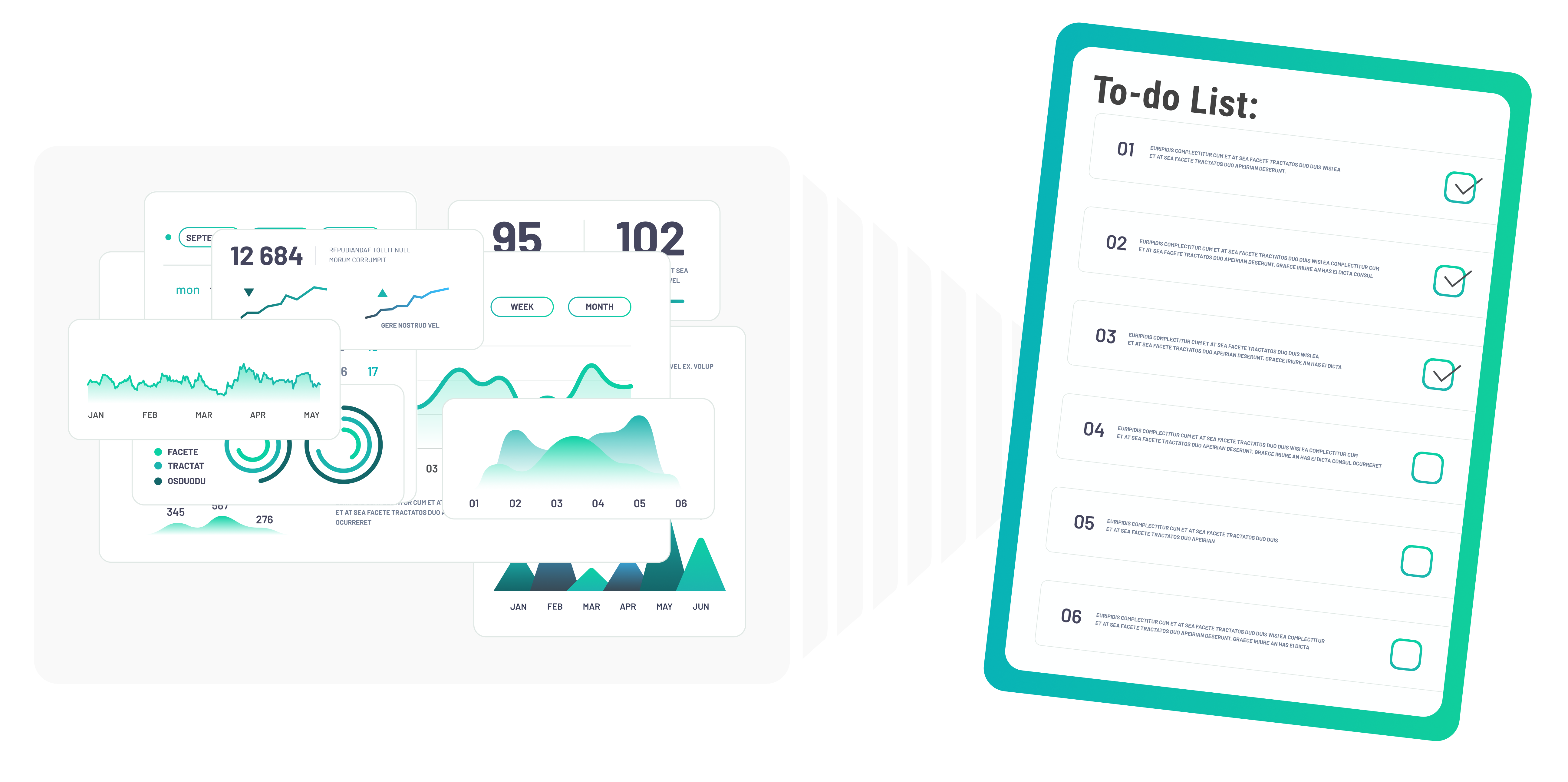
B2B Articles - April 05, 2022
By Chantel Hall, Marketing Content Specialist

Digital marketers are inundated with data today — so much so that it can be difficult to know what data points and metrics to focus on and how to incorporate this data into your day-to-day decisions and strategy. Understanding and utilizing data to inform your decisions is key to successful digital marketing. Almost two-thirds of marketers say that decisions based on data are better than decisions based on gut instinct.1
-Econsultancy and Google
In this blog post, we’ll show you a few ways marketing teams can utilize data and incorporate data-driven marketing into their overall marketing strategy.
To enable data-driven decision-making, you need to ensure historical marketing data is documented and centrally available. This includes the reporting stored in your marketing analytics software and all of the information surrounding your goals, strategies, campaigns, and messaging. All of this data needs to be accessible to your marketing team.
Changes in strategy and priorities also need to be documented to ensure that in the future, you don’t inadvertently make a decision that the data would have told you wouldn’t work.
Documenting and centralizing data creates a foundation for data-driven decision-making and will help you get everyone on the same page as you plan and execute marketing campaigns.
Data-driven marketing requires the understanding that not all metrics are created equal. You have to determine which metrics point to conversions and growth and use those to guide your decision-making.
Metrics like clicks, views, and time on page (what we call “vanity metrics”) don’t tell you if the people taking those actions are part of your intended audience or if your messaging is engaging them. While these metrics can be indicators that your marketing efforts are engaging, they don’t give you a good sense of what outcomes your marketing efforts are supporting. Setting goals around vanity metrics will give you a false sense that your strategy is working when it isn’t actually moving you closer to your growth goals.
For example, if a landing page is consistently generating a lot of entrances and views, but its conversion rate remains low, that landing page is not successful. All of the page views aren’t creating measurable growth or conversions.
As you plan marketing channels, assets, and messaging, use your historical data to inform your decisions and the goals you set for your campaign. Make sure you’re tracking and making decisions based on metrics that demonstrate interest and intent from website visitors and leads.
Your buyer’s journey is a rich source of data you can use to make decisions about your marketing strategy. Data about your current customers’ path to purchase will show you which actions demonstrate that a lead is interested in your product and likely to become a paying customer in the future.
The buyer’s journey is rarely linear, so mining your current customer’s path to purchase for data about their action, pain points, milestones your customers frequently hit throughout the sales funnel, and the solutions they ultimately come to will help you understand your buyer’s journey. You can then incorporate that data into your decision-making process.
Agile marketing is dedicated to data-driven decision-making, and truly agile teams are experts in data-driven marketing. The spirit of agile marketing is fast, frequent launches and constant testing and iteration. Agile teams launch small campaigns, watch how they perform, and use campaign performance data to inform changes to their messaging, copy, design, and other marketing assets based on what they’ve learned.
Use the data you gather about campaign performance to identify small, impactful changes you can make to score quick wins instead of scrapping a campaign and starting from scratch — or, even worse, letting a campaign that isn’t performing well fully roll out before you make any changes.
The digital transformation currently happening in B2B marketing has been a difficult adjustment for some, but for savvy digital marketers, it has provided a wealth of data they can use to understand their buyers more deeply and improve their marketing campaigns.
Sources
1Econsultancy and Google, The Customer Experience is Written in Data
Why and how the most successful brands are putting data at the center of marketing strategy, June, 2017
HubSpot, How to Create an Effective Customer Journey Map [Examples + Template], March 7, 2022
Tel 212-993-7809
Ironpaper ®
10 East 33rd Street
6th Floor
New York, NY 10016
Map
First-party data marketing
SEO for B2B
Customer journey strategy
ABM Agency
Marketing for IoT Companies
HubSpot Implementation
B2B Product Marketing
Measurable Marketing
IoT go-to-market strategy
IT Marketing
HubSpot for ABM
Go to market strategy
Technology Marketing
Marketing for IT Companies
ABM Campaigns
B2B lead generation
B2B Marketing and Growth Agency.
Grow your B2B business boldly. Ironpaper is a B2B marketing agency. We build growth engines for marketing and sales success. We power demand generation campaigns, ABM programs, create B2B content, strengthen sales enablement, generate qualified leads, and improve B2B marketing efforts.